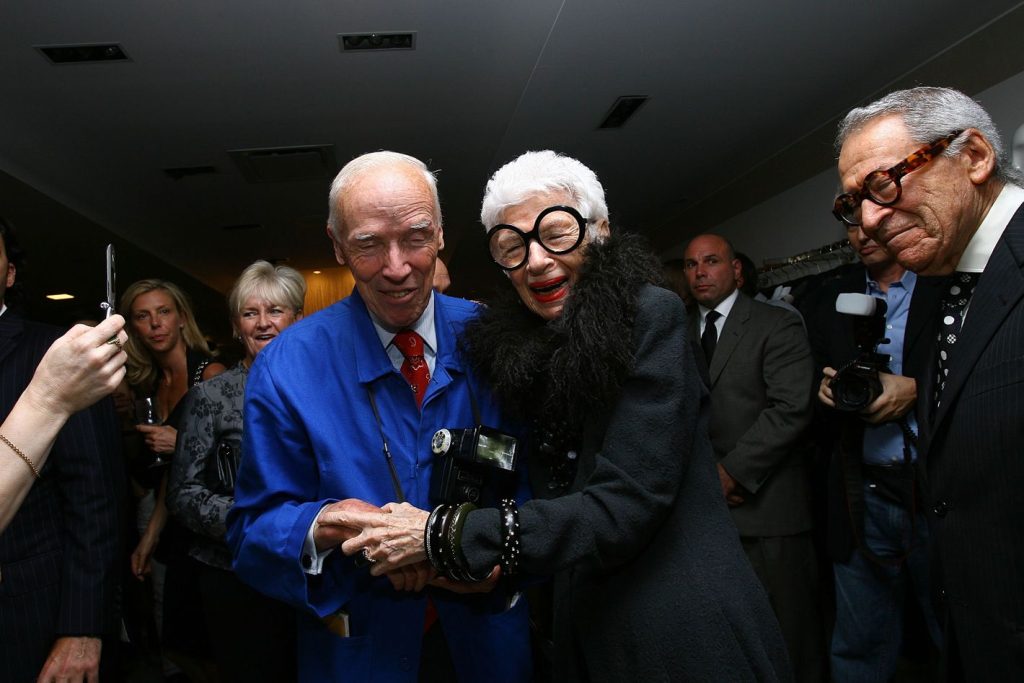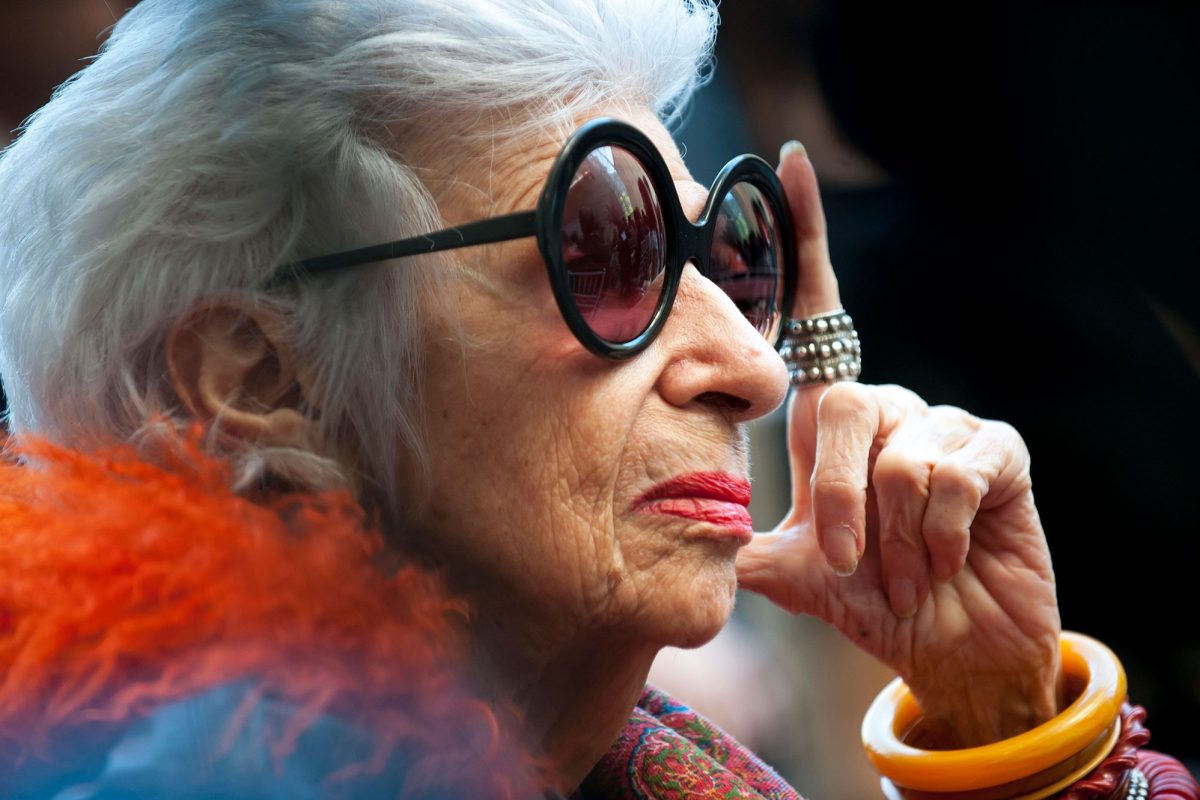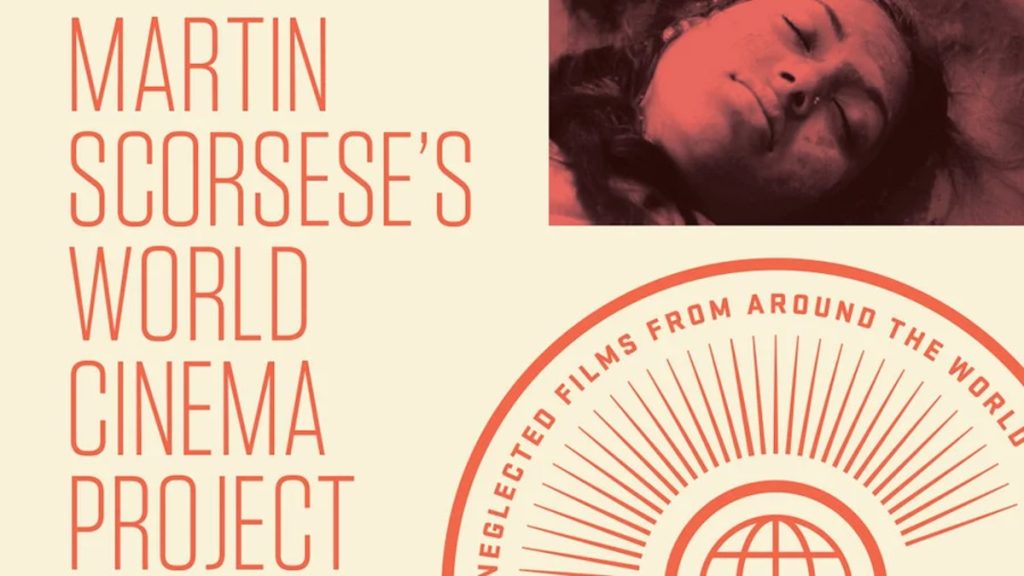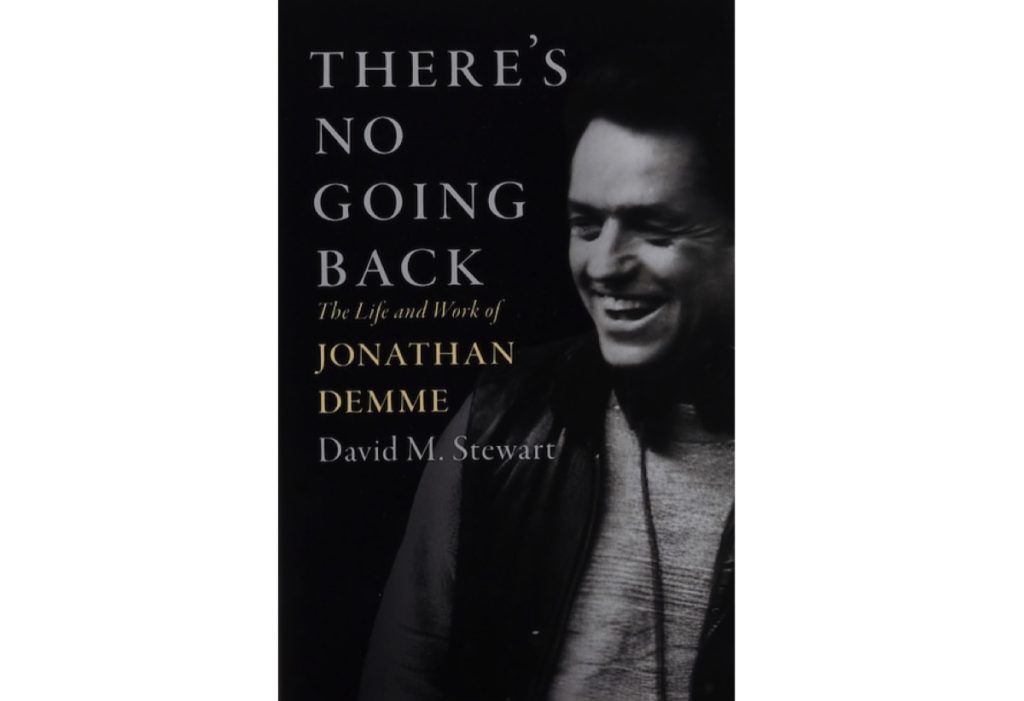When Iris Apfel died in March, she left behind an improbable legacy as—to use her words—“a geriatric starlet.” After living in relative anonymity as a textiles importer to the upper class, Apfel rose to the upper echelons of fashion celebrity when the Costume Institute at New York’s Metropolitan Museum of Art curated a show from her archives in 2006. Her bold style, which thrived on contrasts of color and pattern and formal and casual, inspired eclectic fashionistas and street-style bloggers, and her brand sponsorships and well-chosen media appearances and collaborations kept her in the headlines for the next two decades.
One of the ways Apfel extended her personal brand was through appearances in documentary films. While her extensive knowledge of textile history made her an ideal interview subject, many directors sought her out for her eye-popping fashion and wry, epigrammatic sense of humor.
Scatter My Ashes at Bergdorf’s was in production as Apfel was becoming more visible in the fashion world. The 2013 film takes viewers on a fast-paced ride through the history of the luxury retailer Bergdorf Goodman, showing us how the department store had survived for over a century and why it’s still relevant now. The fast editing, loud score, and use of mixed media, such as animation and archival footage, at times make the film seem like a feature-length trailer, but the flashes of high-end ready-to-wear clothing give it the feel of a time capsule for those who miss the ultra-feminine preppy styles of the 2010s.
Iris only speaks once in the film’s 90-minute running time, describing Bergdorf’s clientele as “sophisticated ladies,” and she pops up in B-roll shot at parties the retailer threw for different brands. Her inclusion in a cast of A-list designers, stylists, and celebrities known to middle America—such as Michael Kors, Karl Lagerfeld, Rachel Zoe, and Joan Rivers—put her in a wider context of mainstream fashion and marked her, at the age of 88, as a rising star.
Apfel gained greater cultural ubiquity during the blog era, in which hobbyist photographers and fashion enthusiasts posted their daily outfits or shared photos of average people with unusual or interesting style. Through her expressive and eclectic clothing, she was in conversation with the women who appeared on Ari Seth Cohen’s Advanced Style blog, who had cultivated a similarly eccentric style into their 80s and 90s.
She appears at the beginning and end of Linda Plioplyte’s Advanced Style, which looks at the phenomenon Cohen and his muses created with his street style blog. Her interviews give her the aura of a wisecracking older sister to the women more closely associated with the Advanced Style blog, making jokes about the vagaries of aging and how to maintain your personal style into your 90s.
While Iris’s high-end work as a model and textiles archivist isn’t addressed in the film, viewers with the knowledge of her museum show and partnerships with luxury brands like Citroen and Kate Spade might intuit a contrast between her experiences and those of the main subjects, who make cuff bracelets out of toilet paper rolls and fake eyelashes from their own hair. At times, Plioplyte’s direction and editing—particularly in scenes with Lynn Dell, whose moments of oversharing could leave viewers feeling weirded out—unfolds like a slow-moving, low-stakes Real Housewives episode. In other, more poignant moments, we see the opportunities that became available to these unlikely fashion plates, as in a sequence in which they attend a casting call for a Lanvin campaign photographed by Steven Maisel. Their excitement and nervousness about whether they’ll be selected for these print advertisements throws Apfel’s career as a model for sports cars and high-end handbags into further relief, almost making her work seem more effortless than that of her peers.
If Apfel’s appearances in Bury My Ashes at Bergdorf’s and Advanced Style play like fun cameos in a larger ensemble piece, her scene in Bill Cunningham New York comes off like a character actor with a meatier role. This documentary offers a career retrospective of the New York Times photographer Bill Cunningham, whose weekly photography feature “On the Street” was an inspiration for the next generation of fashion bloggers.

Unlike the tight close-ups and short interviews of the previous films, Bill Cunningham captures Apfel in a wide shot, perched on a Gilded Age wood-frame sofa in a dimly lit living room. The wide angle and long duration of this shot give viewers a better sense of Apfel’s style and sensibility, but the narrow cut of her black-velvet suit seems staid compared to the maximalist fashion she wore in her other public appearances.
If her personal aesthetic was more low-key in this interview, her insights about street fashion and her sudden celebrity have the colorful humor her fans would hope for. Describing herself as “the world’s oldest living teenager,” she says that she “tries to get as much kick out of things as possible,” picks up a teddy bear dressed in gold lame, and says “this one is very jealous of me.”
Bill Cunningham New York was a sleeper art house hit in the spring of 2011, a few years after the Rara Avis museum show had completed its tour. Her interview in Bill Cunningham, combined with her higher public profile, had piqued the interest of her admirers. Documentary filmmaker Albert Maylses, who brought the unlikely New York fashion icon Little Edie Beale to a wider audience with his groundbreaking documentary Grey Gardens, collaborated with Apfel on his penultimate film, the verite portrait Iris.
Watching Iris after the previous films, viewers may be struck by the hushed atmosphere and deliberate pace of Maylses’s work. If Apfel’s media appearances gave her an indefatigable air, Maylses foregrounds her work ethic and the toll it takes on her. Scenes in which Apfel holds court at runway shows or leads a seminar for young professionals at Loehmann’s are intercut with shots of fashion designer Duro Oluwu pushing her through Harlem in a wheelchair or Apfel talking about “crawl(ing) back to the car” after going shopping.
While each of the previous documentaries touches upon the subject of legacy, Maylses spends the third act of the film looking at how Apfel has used her high profile to share her extensive knowledge with museums and universities. She uses her extensive knowledge of textile history and fashion merchandising to lead a weeklong program for University of Texas fashion students visiting New York, and she oversees the donation of her collection to the dormant fashion collection at the Peabody Essex Museum in Massachusetts. Her attitude towards this work fits with her aphoristic way of communicating with the world: “You really don’t own anything while you’re here. You rent,” she tells Maylses in a voiceover interview, “so it might be nicer to see where it’s going than to not know who gets it.”
Throughout her life, Iris Apfel bridged the worlds of high and low fashion, European and American style, and the elegance of midcentury New York and the faster pace of global style in the 21st century. With the work of these documentary filmmakers, her legacy will live on.



